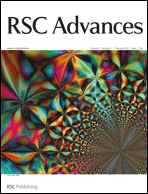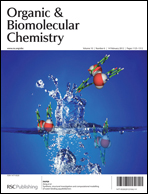Organic & Biomolecular Chemistry is delighted to announce a call for paper for its latest themed issue on: Multivalent Biomolecular Recognition
Guest Editors: Prof. Mihail Barboiu (Institut Européen des Membranes, France), Prof. Olof Ramström (KTH – Royal Institute of Technology, Sweden) and Prof. Stéphane Vincent (University of Namur, Belgium)
Submission Deadline: 15th July 2015
| From the guest-editors: |
|
The understanding and control of multivalent biomolecular interactions has become one of the key frontiers of chemistry and biology. This issue will cover important findings and advances in the field, in order to: The inspiration for this issue comes partly from our membership of the EU-funded Dynamic Interactive Nanosystems ITN Marie Curie DYNANO Network (see http://www.dynano.eu ). We hope that colleagues from the Network will participate but are also very welcoming to contributors who have not (yet) joined our association. |
Research in OBC is published as communications (for urgent work – up to 5 pages in length) or full papers. There is also the opportunity to write a Perspective or Review article for the issue, and if you would be interested in this please let us know. All submissions will be subject to rigorous peer review to meet the usual high standards of OBC.
The deadline for submissions to the themed issue is 15th July 2015, although submissions before this date are of course welcomed.
Manuscripts can be submitted using the RSC’s online submissions service. Please clearly mark that the manuscript is submitted for the themed issue on ‘Multivalent Biomolecular Recognition’.
Please would you inform the editorial office by e-mail as soon as possible if you plan to submit to the issue and whether your contribution will be original research or a review-type article. We would like to have a list of authors who intend to contribute as soon as possible.































